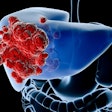State population is a significant predictor of radiation therapy staffing levels, according to a study from the American Society of Radiologic Technologists (ASRT).
In a study published in the May issue of the Journal of the American College of Radiology, an ASRT research team identified a strong relation between state population and radiation therapy staffing levels from 2002 to 2010. The per-capita ratio of therapists was remarkably consistent across all states, even though populations vary widely, ASRT said.
The study team examined population data from the U.S. Census Bureau and radiation therapy state population data from ASRT. Linear regression analysis was used to identify the strong relationship (JACR, May 2012, Vol. 9:5, pp. 358-362).
In a statement, John Culbertson, ASRT director of research, said the degree to which the number of radiation therapists proportionally matches state population is highly unusual, as it's rare to see a single predictor variable this significant and substantial when working with large population numbers.
The researchers also looked at the relationship between the number of physicians and physical therapists and state populations. Similar results were found, confirming that state population can possibly be a strong predictor variable for multiple healthcare professions, according to the organization.
ASRT said it plans to use the results to estimate future demand by monitoring changes in the population of states. This could help healthcare professionals predict the number of radiologic technologists needed to support patient demand.



















